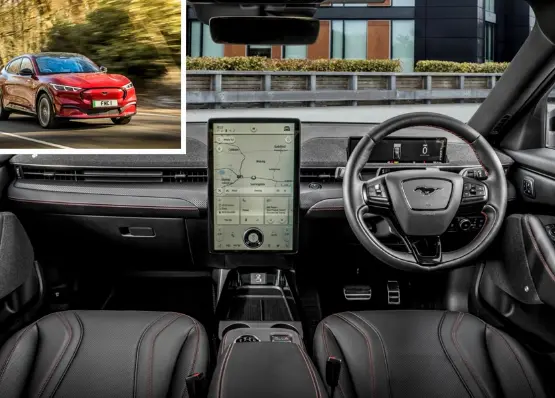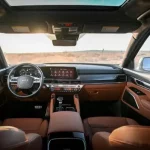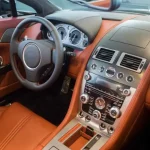The automotive industry is undergoing a profound transformation, with vehicles evolving from mere modes of transportation into smart, connected ecosystems.
As a crucial part of this transformation, car interiors are becoming hubs of connectivity, offering drivers and passengers a seamless digital experience.
In this article, we’ll explore the future of connectivity in car interiors, highlighting the technologies that are shaping the way we interact with our vehicles.
1. Infotainment Systems
The heart of the connected car interior is the infotainment system. Modern infotainment systems are more than just entertainment; they are intuitive command centers that integrate navigation, communication, entertainment, and vehicle control. Touchscreens, voice recognition, and gesture control are some of the ways users interact with these systems.
2. Smartphone Integration
Smartphone integration platforms like Apple CarPlay and Android Auto have become standard features in many vehicles. They allow drivers to mirror their smartphone’s interface on the car’s infotainment screen, providing access to apps, messaging, and navigation.
**3. Voice Assistants**
Voice assistants like Amazon’s Alexa and Google Assistant have made their way into car interiors. Drivers can use voice commands to control various functions, from adjusting the climate to playing music or finding directions. These voice assistants enhance convenience and safety by reducing distractions.
**4. Connectivity Options**
Car interiors are now equipped with multiple connectivity options. From Wi-Fi hotspots to Bluetooth, NFC, and 5G connectivity, passengers can stay connected to the internet and their devices seamlessly. This connectivity is not only for entertainment but also for over-the-air updates and diagnostics.
**5. Advanced Navigation**
Advanced navigation systems in smart car interiors offer real-time traffic updates, predictive routing, and augmented reality displays. These features make navigation more intuitive and efficient, helping drivers avoid congestion and find destinations with ease.
**6. Touch and Gesture Control**
Touch-sensitive surfaces and gesture control systems are becoming more prevalent in car interiors. These interfaces allow users to interact with infotainment systems and vehicle controls using intuitive gestures and touch commands.
**7. Rear-Seat Entertainment**
Connectivity isn’t limited to the driver’s seat. Rear-seat entertainment systems with individual screens, gaming consoles, and streaming capabilities keep passengers, especially children, engaged during long journeys.
**8. Over-the-Air Updates**
Car manufacturers are increasingly adopting over-the-air (OTA) software updates. This means that car interiors can receive updates just like our smartphones and computers, keeping the infotainment system, safety features, and other components up to date.
**9. Vehicle-to-Everything (V2X) Communication**
V2X communication allows vehicles to exchange information with each other and with infrastructure, enhancing safety and efficiency. For example, a smart car can receive signals from traffic lights to optimize speed and fuel consumption.
**10. Augmented Reality (AR) Head-Up Displays**
AR head-up displays provide drivers with real-time information, such as navigation directions and warnings, overlaid on the windshield. This technology reduces the need for drivers to take their eyes off the road.
**11. Biometric Authentication**
Some smart cars are incorporating biometric authentication systems, such as fingerprint recognition or facial recognition, to personalize settings and enhance security.
**12. Personalization**
Smart car interiors can remember individual driver preferences, adjusting settings like seat position, climate control, and infotainment choices automatically. This level of personalization enhances the driving experience.
**13. Artificial Intelligence (AI)**
AI-powered systems are making cars smarter. They can analyze data from various sensors to provide predictive maintenance alerts, improve fuel efficiency, and even personalize the in-car experience based on driver behavior.
**Conclusion: The Connected Car Experience**
The future of connectivity in car interiors is a world of limitless possibilities. As technology continues to advance, our vehicles will become more than just modes of transportation; they will be intelligent, personalized, and connected spaces that enhance our daily lives. The smart car interior is not just about convenience; it’s about creating a safer, more efficient, and enjoyable driving experience for everyone on board. With every innovation, the journey becomes more than just a ride; it becomes an immersive and connected adventure.


